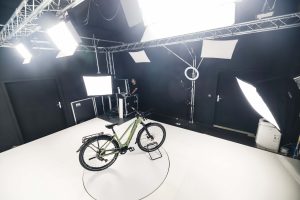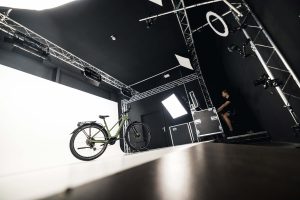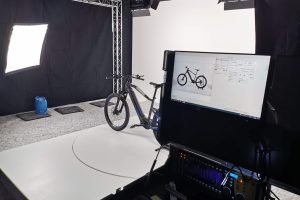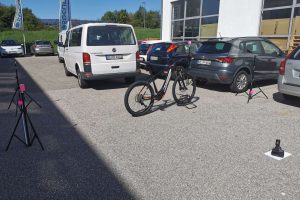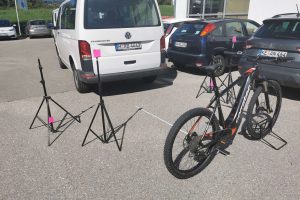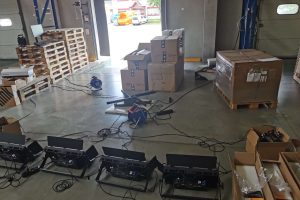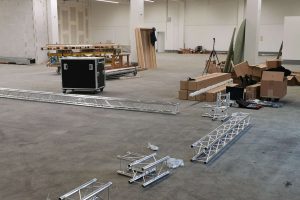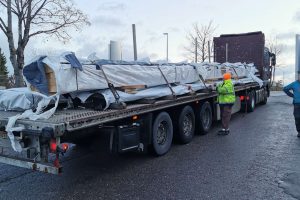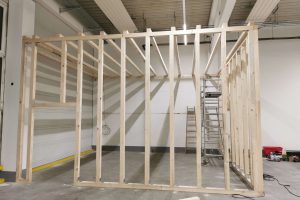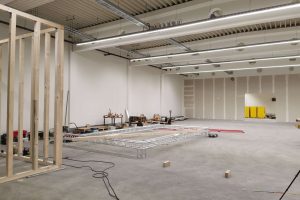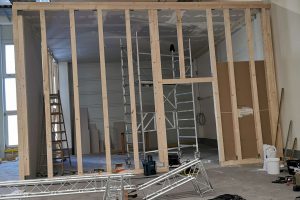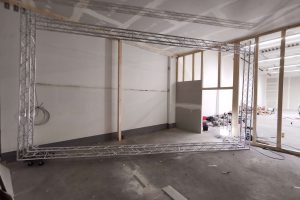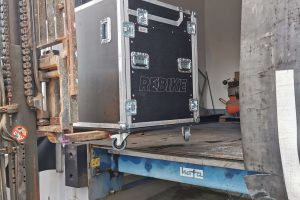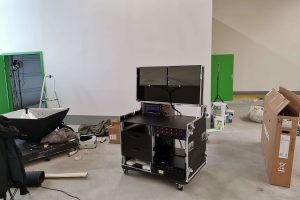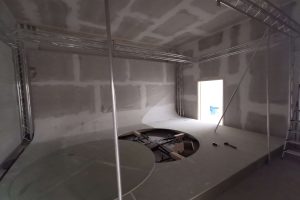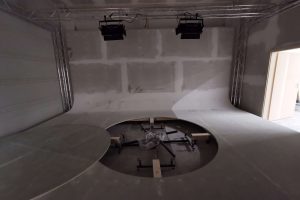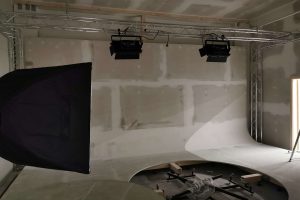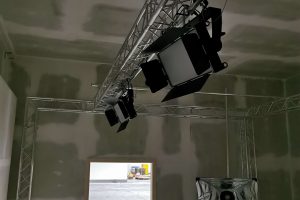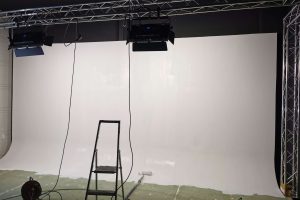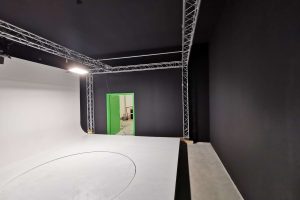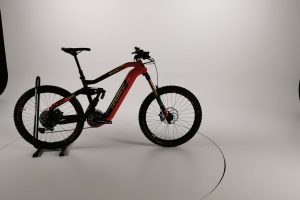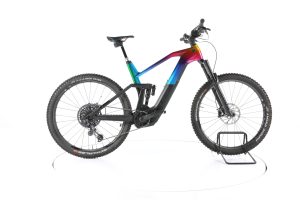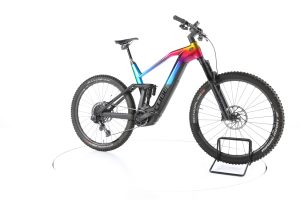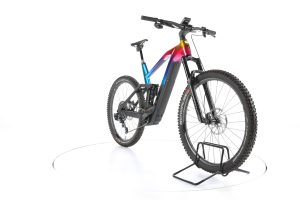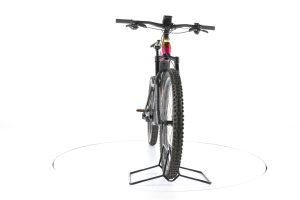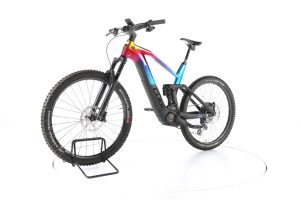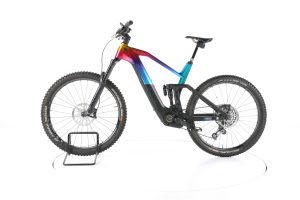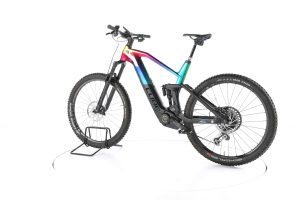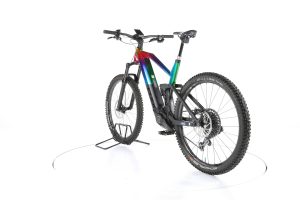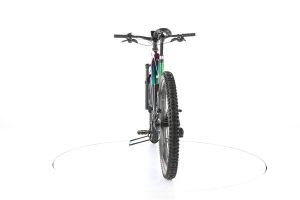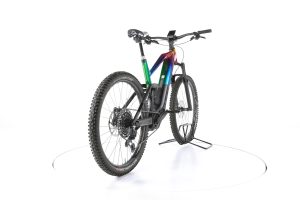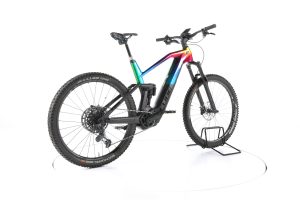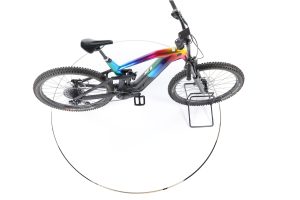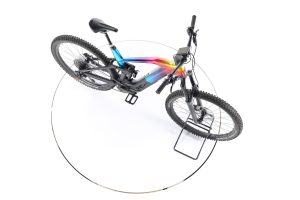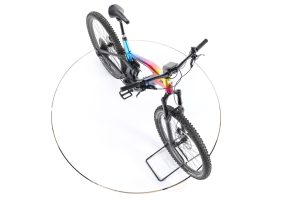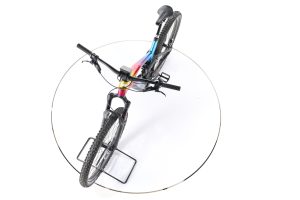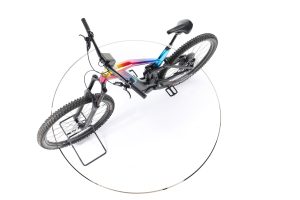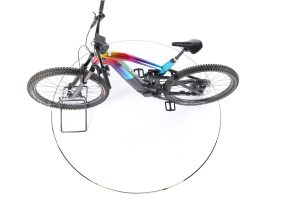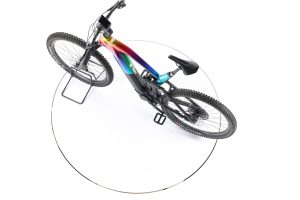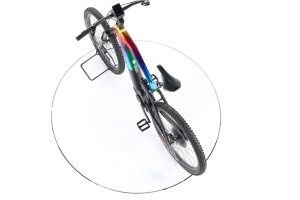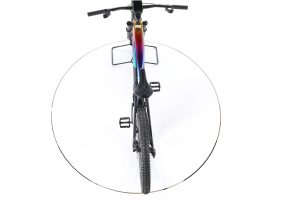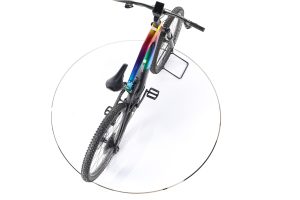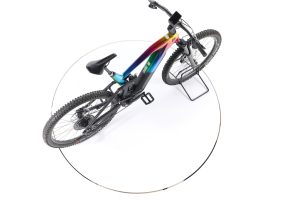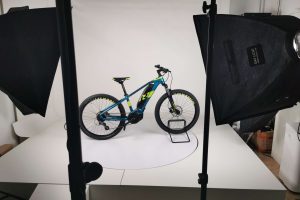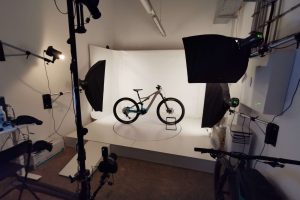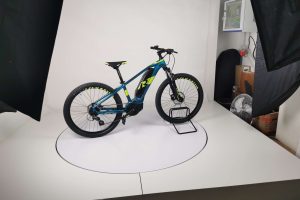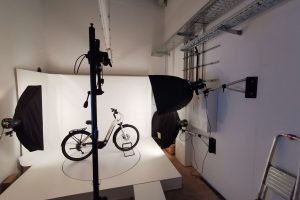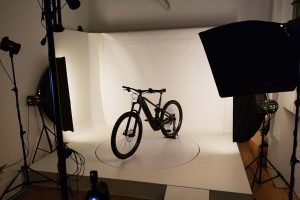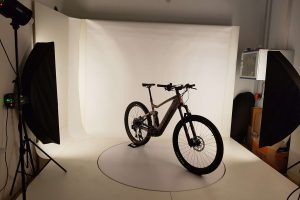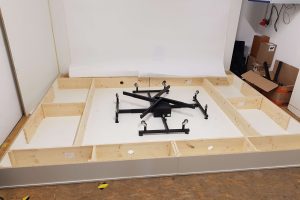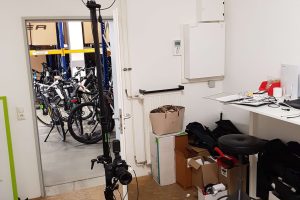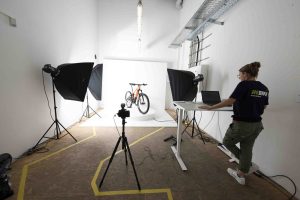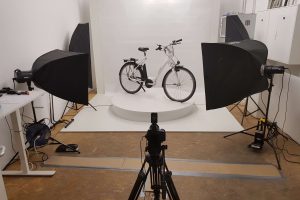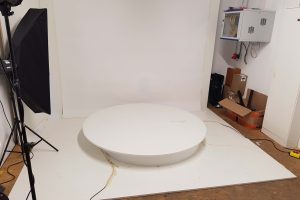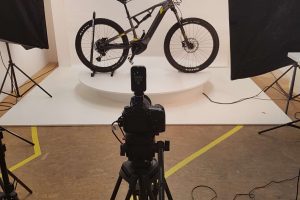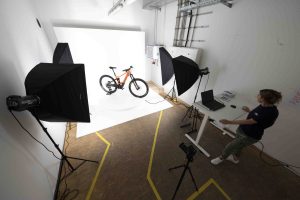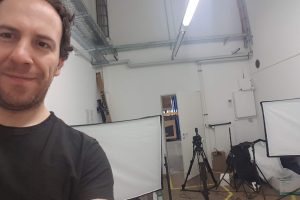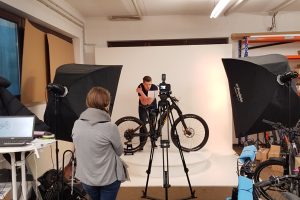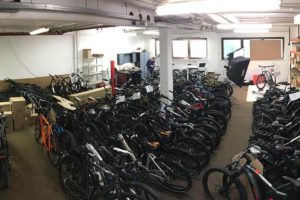Rebike Photo Studio
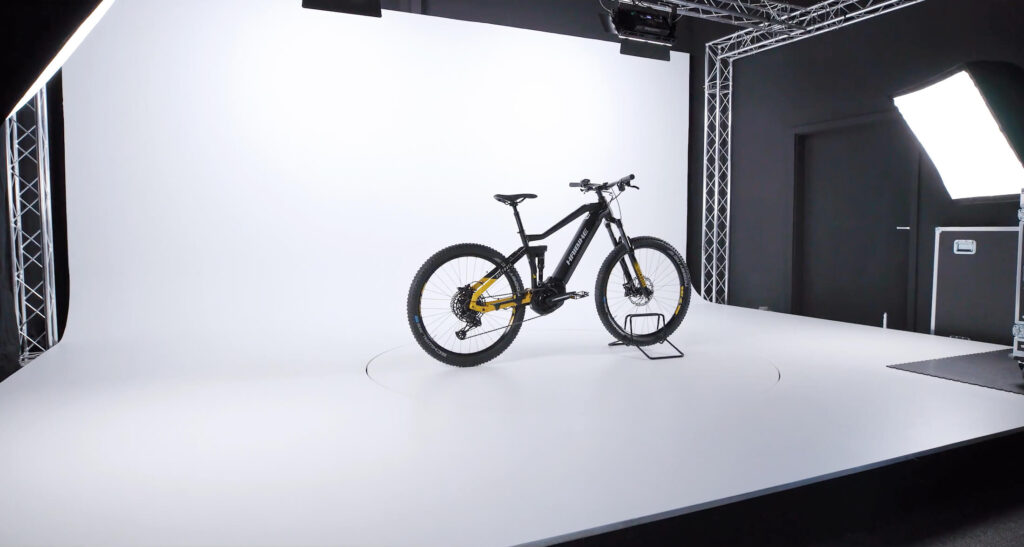
Building Europe’s Most Advanced E-Bike Photo Studio
As the leading online store for used e-bikes, with the largest refurbishment center in Germany, we knew that customers needed absolute confidence in what they were buying. These aren’t just any bikes each one undergoes a meticulous process of cleaning, inspection, and sometimes component replacement before it’s listed for sale. With price tags ranging from €2,000 to €5,000 or more, buyers expect high-quality images that show every detail, every angle, and even the smallest scratches. That’s where our photo studio came in.
From Live Events to E-Bike Photography
My background in live event video production, product photography, and stage lighting for music bands gave me a unique advantage when it came to designing a studio that could produce the best possible images. I knew that lighting, angles, and precision were everything. Over the years, we refined and improved our setup transforming a simple setup into one of the most advanced 360-degree photo studios in Europe.
Photo Studio Version 4 – 2022: The Most Advanced Yet
By 2022, our studio had evolved into a state-of-the-art facility so much so that even e-bike manufacturers admitted our images were better than theirs. Every detail was designed with precision:
- Professional Stage TrussingEasily adjustable lighting positions for perfect illumination.
- Optimised FlooringA specially mixed floor paint with hardening agents that prevents tyre marks and is easy to clean.
- Industry-Standard BackdropThe same paint used in television and film studios, ensuring a flawless, even colour spread.
- Next-Level LightingTraditional flash lamps were replaced with continuous lighting offering 97% true colour accuracy.
- Laser-Guided PositioningEnsuring each bike is placed perfectly on the rotating turntable.
- Custom Control SystemA flight case and switching units allow everything to be operated from a single point.
- Uninterrupted ShootingUPS backup units keep cameras and motors running during power cuts, avoiding workflow disruption.
- Remote OperationIf issues arise or new staff require training, the entire room—including cameras and lighting—can be controlled remotely.
Most importantly, the entire process is fully automated. The operator simply presses a couple of buttons, and within minutes, the system captures and processes the images compared to the 25-minute process in the early days.
After each shoot, the images are automatically uploaded via a dedicated internet connection to AWS, where they are resized, cropped, and optimised for various uses. A custom AI application even identifies frame colours and components like mudguards, on-frame batteries, and lights automating what was once a manual task.
Photo Studio Version 3 – 2021: Improving Bike Visibility
One of the biggest challenges we faced came from customer feedback, buyers wanted to see more detail in specific areas of the bike, particularly the handlebars, seat, and top frame. To solve this, we added an overhead camera that captured 12 additional images from a top-down perspective.
However, this introduced a new problem. Traditional tripods were either too short or had legs that were too wide, obstructing the workspace. After some research, I found a heavy-duty speaker stand that was both tall and stable enough to support the setup. Using a Manfrotto Magic Arm and super clamps, we secured the overhead camera firmly in place.
Another issue was the difficulty of lifting heavy e-bikes, most weighing over 20kg onto the raised turntable. To address this, I commissioned a local woodworker to build a small raised stage with a sloped ramp, making the loading process much easier and safer.
To achieve a more consistent background, we introduced a 3-metre white paper roll as a backdrop. By curving it smoothly and securing it with white tape, we created a seamless, professional look for every shoot.
The biggest bottleneck, however, was upload speed. At the time, our production facility was still using a 5Mbps copper-wired internet connection, which meant it took five minutes to upload the images for just one bike significantly slowing down the workflow.
Photo Studio Version 2 – 2020: A Dedicated Studio Space
In 2020, we moved the refurbishment process into a new production hall in Kempen. With this move came a major upgrade: a dedicated studio room built specifically for photography. The space was completely blacked out to allow for controlled lighting conditions, enabling consistent and professional results.
We installed four flash lamps with softboxes, which significantly improved image accuracy. The desktop software was also upgraded to automatically sync product images with the website, so the content team only needed to approve uploads—eliminating the need to handle image files manually.
Despite these improvements, one major challenge remained: the colour presets. The operator had to manually select the correct lighting settings and colour template for each bike. For example, when photographing a blue bike, the flash lamps had to be adjusted and the blue template selected. This process had to be repeated for other colours, such as white, adding unnecessary steps and slowing down production.
While image quality had reached a new level, the workflow was still far from efficient, taking around 15 minutes per bike.
At this stage, we hadn’t yet installed the overhead camera, but we were already encountering problems with unstable tripods. Standard photography tripods lacked the height and stability we needed for consistent results. To improve the setup, we started using my personal video tripod, which offered far greater stability and position control. For added security and to avoid accidental movement during shoots, we bolted it directly to the floor laying the groundwork for future enhancements like the overhead camera system.
Photo Studio Version 1 – 2019: The Basement Beginnings
Our first-ever photo studio was a modest basement space located next to the refurbishment area. We captured 12 images per bike using flash lamps, but the presence of room lighting and uncovered windows led to inconsistent backgrounds and poor light control.
As a result, bike colours often appeared inaccurate compared to how they looked in real life. Adding to the challenge, the camera didn’t have a dedicated power supply. Each time the battery was changed, the camera’s position would shift slightly, leading to inconsistent framing between shots.
The post-production process was equally inefficient. Every photo had to be manually transferred via FTP, then downloaded, cropped, resized, and re-uploaded before it could be added to the product page. Altogether, the workflow took around 30 minutes per bike a far cry from the efficiency we would later achieve.
From Basement to Cutting-Edge Studio
Over the years, we’ve transformed our photography process from a basic basement setup into one of the most advanced 360-degree e-bike studios in Europe so refined that even manufacturers praised the quality of our visuals.
This evolution has been driven by relentless problem-solving, automation, and a commitment to consistency. What once took over 30 minutes per bike now takes just a few, thanks to fully automated workflows, controlled lighting, precise positioning systems, and smart post-processing. Our goal has always been to provide customers with crystal-clear, accurate visuals that help them make confident, informed purchasing decisions.
But the journey doesn’t stop there. I’m currently planning a dual-studio setup designed to process even more bikes simultaneously, with enhanced controls to make the system faster, more user-friendly, and capable of keeping up with refurbishment demand. To ensure image consistency at scale, both studios are exact replicas so much so that even the most observant website visitors won’t notice any difference.
That pursuit of visual consistency was inspired, oddly enough, by a scene from the film Casino, where Robert De Niro’s character insists every blueberry muffin contain the same number of blueberries. That scene stuck with me. I wanted every bike photo, whether the first or the ten-thousandth, to look identical in quality and layout. Consistency became the standard, not the exception. Watch the clip here.
Looking ahead, I’m also looking at new website feature, a Virtual Bike Inspector. This interactive tool will guide customers through each bike, highlighting components, replaced parts, functionality, and any cosmetic wear essentially replicating the experience of viewing the bike in person, but from the comfort of home.
We’ve come a long way, but the mission continues. There’s always room to improve, streamline, and elevate the customer experience.

